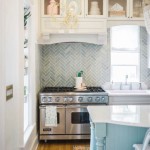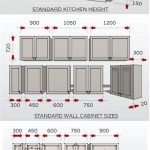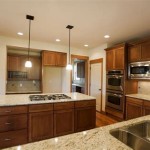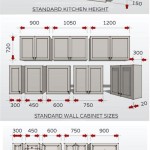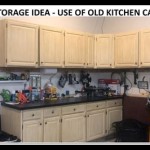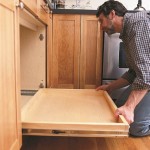How To Determine Kitchen Cabinet Door Swing
When designing or renovating a kitchen, one crucial aspect to consider is the swing direction of cabinet doors. Proper door swing ensures easy access to cabinets, prevents collisions, and creates a functional and aesthetically pleasing space. This article will explore various methods for determining cabinet door swing, taking into consideration both functionality and aesthetics.
Consider the Layout and Flow of the Kitchen
The primary factor in deciding cabinet door swing is the overall kitchen layout and the flow of movement within the space. The goal is to create a comfortable and efficient workflow. For instance, if a cabinet is situated near an entryway, a door that swings inwards might obstruct traffic. Conversely, doors opening outward might be inconvenient if they block access to other appliances or furniture.
Analyze the Cabinet's Location and Purpose
Each cabinet has a specific function, and its location dictates the most practical swing direction. For example, base cabinets located under the sink are best suited for doors that open outward. This allows for easy access to the sink and prevents the door from hitting the countertop or backsplash. In contrast, upper cabinets situated above the stovetop are typically best with doors that open upward or have a hinged design to ensure a clear view of the cooking area and prevent accidental bumps.
Take into Account the Existing Appliances and Furniture
The placement of appliances and furniture significantly influences cabinet door swing. Ensure that doors do not collide with appliances, such as dishwashers, refrigerators, or ovens. Additionally, consider the location of tables, islands, or other furniture items that may be positioned near the cabinets. A clear understanding of the layout and existing furniture will help determine the most efficient door swing.
Utilize the "Wall-Hugging" Technique
One effective method for optimizing cabinet door swing is the "wall-hugging" technique. This approach involves placing cabinets close to the wall to minimize the space required for door movement. By positioning cabinets tightly against the wall, the doors can swing outwards without obstructing walkways or colliding with other elements in the kitchen.
Employ the "Traffic Flow" Method
For a more comprehensive assessment of cabinet door swing, employ the "traffic flow" method. This involves visualizing the typical movement patterns in the kitchen, from entering and exiting the space to preparing meals or cleaning up. By mapping out the flow of traffic, you can identify potential areas where cabinet doors might interfere with movement and adjust the door swing accordingly.
Measure and Plan Cabinet Door Swing
After considering the layout, functionality, and traffic flow, proceed with precise measurements for each cabinet. Determine the required space for the doors to swing open fully without any obstructions or interference with other elements in the kitchen. These measurements will help you finalize the cabinet door swing direction for each unit.
Utilize Door Hinges with Adjustable Swing
Modern cabinet hinges often feature adjustable swing, offering greater flexibility in customizing door movement. These hinges allow you to fine-tune the door swing by adjusting the hinge positions to accommodate specific requirements. This feature is particularly beneficial for cabinets located in tight spaces or those with unique design considerations.
Employ Alternative Door Styles for Limited Space
In instances where space is limited, consider alternative door styles like pocket doors, bi-fold doors, or lift-up doors. Pocket doors slide into the cabinet wall, saving valuable space, while bi-fold doors fold in half for compact opening. Lift-up doors, ideal for upper cabinets, provide vertical opening, eliminating the need for horizontal swing space.
Consider Aesthetics and Overall Design
Beyond functionality, cabinet door swing also contributes to the overall aesthetic appeal of the kitchen. Ensure that the door swing complements the design style and creates a harmonious visual flow. In some cases, the specific design of the cabinet, including the handle placement, might dictate the most visually appealing door swing.
Consult with a Professional
For complex kitchen designs or if you are unsure about the optimal cabinet door swing, consulting with a professional kitchen designer or cabinet maker is advisable. These experts possess extensive knowledge of spatial planning, cabinet construction, and design principles. They can provide valuable insights and guidance, ensuring a functional and aesthetically pleasing kitchen layout.

Which Way Should Kitchen Cabinet Doors Open

The 6 Most Common Types Of Cabinet Doors

The 6 Most Common Types Of Cabinet Doors

The 6 Most Common Types Of Cabinet Doors

How Does Left Right Door Hinging Work Diy Kitchens Advice

Identifying Common Errors In Kitchen Design Part 2 Vestabul School Of

How Does Left Right Door Hinging Work Diy Kitchens Advice

Installing Lift Up Stay Open Cabinet Door Hardware Sawdust Girl

Kitchen Design 101 Cabinet Types And Styles Ottawa

Swing Out Storage Kitchen Cabinets Diy Family Handyman
Related Posts

